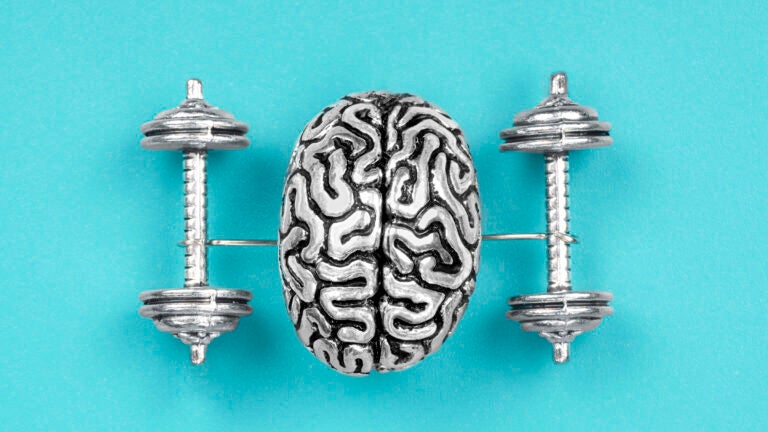
New USC study opens up the possibility of “exercise-in-a-pill” treatments. (Photo/iStock)
Could a pill provide the dementia-fighting benefits of exercise? USC study raises the possibility
USC Leonard Davis Professor Constanza Cortes’ lab is looking for ways to help older people who can’t exercise due to medical or physical conditions.
Could we pack the dementia-fighting benefits of exercise into a pill?
An intriguing mouse study conducted by USC scientists suggests it may be possible.
Exercise boosts blood flow, reduces stress and more. It also prompts muscles to secrete messengers that guard against Alzheimer’s disease by activating a network called the “muscle-brain axis.”
New research, published in the journal GeroScience, suggests this muscle-to-brain conversation can be switched on — without any exercise at all.
Using mouse models of Alzheimer’s disease, researchers “borrowed” one of these muscle messengers and replicated the benefits of exercise on the brain.
“This opens us opportunities to develop ‘exercise-in-a-pill’ treatments for our brain, which we are currently actively testing in our lab,” said senior author Constanza Cortes, an assistant professor at the USC Leonard Davis School of Gerontology.
New treatment could benefit seniors who can’t exercise
Such an “exercise-in-a-pill” treatment could benefit older people, who may have trouble achieving recommended levels of activity due to injuries or other medical conditions.
For this study, researchers compared the behaviors of Alzheimer’s mouse models with Alzheimer’s mice that had been genetically engineered to secrete high levels of a muscle messaging peptide without exercise.
The muscle messenger preserved the mice’s ability to navigate a maze or to nest — both measures of healthy cognition in mice.
“We looked at a bunch of Alzheimer’s-related pathologies — accumulation of plaques in the brain, inflammation in the brain and synapse communication, which is how neurons talk to each other. All of these things are completely awry in Alzheimer’s,” Cortes said. “So, we examined a group of Alzheimer’s mice, and then the same Alzheimer’s mice but with this muscle modification, and we showed that we could ‘rescue’ a lot of these symptoms.”
The researchers also gave healthy mice a dose of the muscle messenger via injection and then observed benefits to the brain — without exercise.
“This is specifically to activate these brain pathways that respond to exercise in the context of populations that can’t exercise,” Cortes said. “It’s for people who cannot get on the treadmill and exercise to the level that they need to.”
In addition to Cortes, other study authors are Hash Brown Taha, Ian Matthews, Karel Aceituno, Jocelyne Leon, Max Thorwald and Jose Godoy-Lugo, all of USC; and Allison Birnbaum of UCLA.
The work was supported by funds from the National Institutes of Health, including grants R01 AG077536, NIA T32 AG052374 and the Alzheimer’s Association grant AARF-21–851362.



